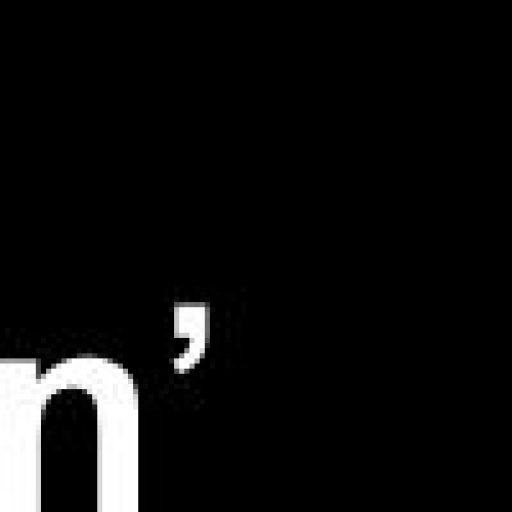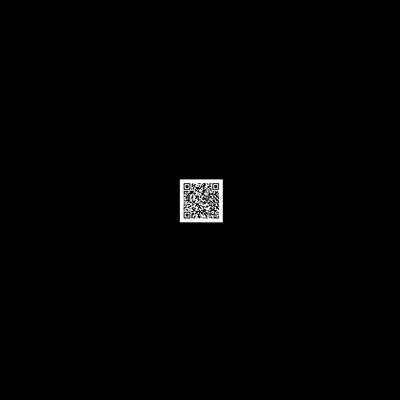Proposal submitted by n’UNDO for the PiensaSol competition. With the collaboration of Alberto Corsin
Location: Puerta del Sol, Madrid, Spain
Year: 2014
Framework: PiensaSol Competition
#Public Space #Reflection
“The square is suddenly the crowd and its emptiness:
the disappearance of everyone, of everything and of the one who looks […]
with infinite possibilities of play from empty space”
José Ángel Valente, “The Stone and the Center” 1982
Participation Handbook
#Think? #Take the minimum techno-moralia that should sustain public debate today. As opposed to the traditional exercises in interventionist architecture, #SolPiensa? deals with the design of a common laboratory of social architecture.
Today it is no longer possible to propose citizen participation through consultative and, therefore, paternalistic formats. The surveys, the questionnaires, the citizen forums, are tools typical of asymmetric and dying sociologies. On the contrary, we have at our disposal tools that allow us to multiply complexity, to visualize it, to sustain it. Digital, material and social interfaces that make “participation” possible without the need to arrogantly bring it into existence. Tools that accommodate and show the complex topologies of the situated habitat.
The new information and communication technologies, the systems of processing, analysis and visualization of ‘big data’ (large databases), and above all access to the source codes of such tools, allow us to try out new approaches to urban complexity. Today it is possible to access historical and real time data on socio-demographic variables (age, income level, family structure, level of studies…), residential values (rents and prices of buying and selling houses), census, immigration, roads and traffic, public transport, noise and environmental pollution, rubbish collection and recycling, etc., which are essential for making visible the relations that Sol has had and maintains with the city, as well as the place it occupies in the configuration of the political and economic geography of the metropolis.
Inviting people to think about the “square” Sol is therefore a fallacy, as well as an error that once again perpetuates an exhausted political imaginary and an infertile sociological vocabulary. We cannot continue thinking about our cities from the humanist and cosmopolitan urbanism of the sixties. Talking about “consumers”, “tourists”, “public space”, “hybrid spaces”, “dialogue”, “meeting places” or “multiculturalism” does nothing more than air boring sociological romanticisms as well as regulating an infinitely more complex reality.
It is for all these reasons that we propose here a re-infrastructure of the square that requires, firstly, our conceptual equipment; secondly, an opening up of the source code of the technical and expert systems on which the city’s urban infrastructure is supported; and finally, a re-articulation of the governance frameworks that the design of open supports enables.
Sol is not a “square” or a “public space”: it is a complex techno-infrastructural assembly whose source code needs to be open and known. Sol is techno-citizenship that demands techno-care. From there and only from there can one invite a participative inhabitant of the city.
The place that Sol is already today – the channels through which it thinks itself and becomes urban; the ways in which #SolPiensa? requires, in short, to radically address the three challenges outlined above:
1. Conceptual. Open infrastructures destabilise the conceptual imaginary with which we are used to thinking about the city. For example, the design, development, installation, maintenance and citizen management of digital sensors for measuring air quality confuses the public-private framework with which we have been thinking about the city. What is public space when a city’s infrastructure, equipment and information systems are designed, analysed and managed by its citizens?
2. Technical systems and experts. The design of infrastructures and open technologies often involves the parallel design of new systems for working in networks, cooperation and data exchange, standardization and certification of information and models. How information is shared and systematized; who, how and where it is evaluated and certified; with what criteria and protocols it is validated and allowed to circulate; these are all questions that often lead to the simultaneous development of methodological, metrological, technical and documentary innovations, etc.
3. Governance frameworks. What does it mean for a community to assume the competences and responsibility for the design, maintenance and management of an urban infrastructure? What kind of right results from the opening of the source code of the technical, material and regulatory systems that give political shape to our city? Could we then speak of a new “right to infrastructure” for citizens? These are all thorny questions that we must nevertheless face, and from which it is imperative to tackle the design of new governance frameworks for our cities.
This new status, resulting from access to information, from the possibility of opening and reading the codes, will be a key factor in the development of a new governance framework for our cities.
Rethinking the square
Thinking about a process of redevelopment today implies proposing another framework, another way of thinking, another concept of urban modification through citizen participation. It means, in the first place, setting in motion long-range processes where there is an express need for citizenship. Processes that question all urban agents that can be included to contribute wealth and knowledge, making visible the conflicts and needs of the whole community that participates in that place.
On the one hand, it is necessary to know the environment in which one is acting, its influence on the collective imagination. It is necessary to know how it has adapted to the pace of the modernization processes of our society, modifying its balances, in order to continue being the scenario of the urban activities that are developed there. It is necessary to know how to see and interpret the social changes in a community in order to generate adequate responses. This vision is basic to respond to these needs, without linking them to temporary factors dictated by the urgency or aesthetics of the moment.
Should all public space be treated equally, regardless of its idiosyncrasies?
Urban space has been defined by the tensions between the public and the private since the foundation of cities as a manifesto or habitat for human beings; so much so that the most interesting aspect of human activity occurs in the unconstructed, in the empty space between buildings. It is in this space, called public to distinguish it from the built or private, where the most important problems of our society are expressed. But more specifically, it is in the open spaces of the squares where the citizen establishes a synergy with the environment and condenses a collective and participative social conscience, the motor of relevant historical avenues for the community or nation.
Sol is a square that thinks. Yes, it thinks through all the citizens who pour into it their daily reflections and concerns. That is why it is not pertinent to think of Sol as a simple physical space, but it is necessary to take into account the social maturity it has suffered in recent years.
In the light of these considerations, the following question must be asked: Can a survey provide the real needs of the square?
If public space is the area where social interaction takes place, why participation based only on the physical aspects of it? Then are concepts such as “public” and “private” still valid? We know that when a (public) space loses its character as a place of relationship it is mainly due to economic factors, but other aspects are forgotten that are emerging with increasing force in our mediatized society: the use made of data from security cameras, the invasion of digital screens and advertising posters on the facades of buildings, the tensions between road and pedestrian traffic, the management of our cities by activating gentrification processes in favor of tourist traffic or the commercial interests of the moment.
Communication with the city is deteriorating and the cohesive and social potential of Sol is being wasted. For this reason, rather than raising a question about how to modify the square in its physical appearance, access to sources of information and data should be opened up so that every citizen can access and make Sol a space for debate and experimentation in another form of civitas.
Let’s stop thinking about Sol and let Sol think and become a research laboratory with a free and open infrastructure that allows us to continue thinking aloud about urban needs and rights. In this new dimension, the city is equipped with infrastructure with the pace and quality that marks the social reality, a reality that demands commitment, information and participation.
Propaganda Sun
Propaganda Sol is currently an icon disguised by brands that started a war to try to put a face to a public space that long ago transcended the image of “grape clock square” and became a brand in itself.
Attempts to usurp Sol’s personality, such as renaming its station or covering its facades with giant canvases, are turning the square into a monster. This is because it has been modelled on spaces created by and for brands with archaic advertising strategies that annul the public character. This is the case of Piccadilly Circus or Times Square, which now desperately seek to regain contact with the citizen by involving them in games and trivial activities that are projected on huge interactive screens. On the other hand, Sol is already a living space, which thinks for itself and is done every day in a spontaneous and critical way by and for citizens, with a committed social conscience. It is already a public space with its own personality that will not be domesticated either by urban disposition or by advertising brands, and a good example of this was the “kidnapping” of the L’Oréal canvas, which during 15M, served as a wall of collective expression and mirror of Sol. For this reason, the elements that make up this square, including advertising, should accept this reality and evolve with it.
From this perspective, Sol is an atypical gateway, with a special urban empathy that deserves publicity that is also atypical and customised, committed to the values of the square and respectful of the citizens’ space.
If our current system cannot do without the financing of commercial brands, let us make them aware of the immense value, beyond the economic, of places like Sol. Let’s urge brands to practice advertising that is up to par and propose a challenge to them: to be amplifiers of Madrid’s conscience and to advertise themselves as providers of innovative supports, applications and communication channels, which transmit current and retrospective information of a social, urban, critical nature, etc. For example, to bring to the citizen data such as: What levels of pollution are there in Sol compared to other areas of Madrid, what flow of people has circulated in the square so far, what day has been the busiest to date? Or what is the occupation of all the car parks in Madrid?
This concept of a conscious space should also be accompanied by alternative supports and channels to minimize the use of canvases and fences that undermine the identity of the plaza and make it vulgar for tourists and unrecognizable for the people of Madrid. Alternative forms of advertising such as the so-called “guerrilla” or viral advertising, spread through the Internet, are booming forms of communication that can minimise the visual impact of traditional advertising and also get the attention that has been lost through conventional media. In this direction, wifi networks are currently the perfect means of opening up a very wide range of participatory communication possibilities through mobile phones and tablets with which, for example, this proposal has been accessed.
Manual of identity of a Square
To define Sol as the square of the grape clock or the kilometer zero is a very superficial and unfair vision for one of the places with more historical transcendence in the whole country.
For centuries, Sol has been a tacit meeting point for the citizens, from where exchanges of all kinds have been spontaneously generated with a strong social base. Kings’ receptions, flea markets, the fountain where water carriers and cafés used to meet, favoured an exchange of ideas and critical thoughts, which soon stopped needing an event, a cup of coffee to demonstrate or benches in the shade.
These social interactions in which the daily and political problems of the moment surfaced are the pillars on which the social cohesion and critical values of Sol are based; values that make it unique and that, whether we like it or not, were revitalized by 15M and replicated in 2.0 mode. At that time the interaction between citizens took a further step, bringing together virtual networks and face-to-face, and the public space evolved into a forum for dual cyberspace/space debate.
In short, Sol is not just any square, in fact it may be the public space of the future, a place made through collective consciousness. For this reason, it is worth asking: how can consciousness be shaped, can it be done? Answering these questions requires a new way of conceiving urbanism and the adoption of a new concept that transcends benches, planters, pavements and other worn-out concepts of traditional urbanism.
Sol is a space that thinks
Project elaborated by: Indalecio Batlles, Julia Font, Beatriz Sendín, Fabio Silli, Rebeca López, Mayra Martinez, Miriam Mora, Gonzalo Sánchez, Alejandro del Castillo and Verónica Sánchez. With the collaboration of Alberto Corsin



